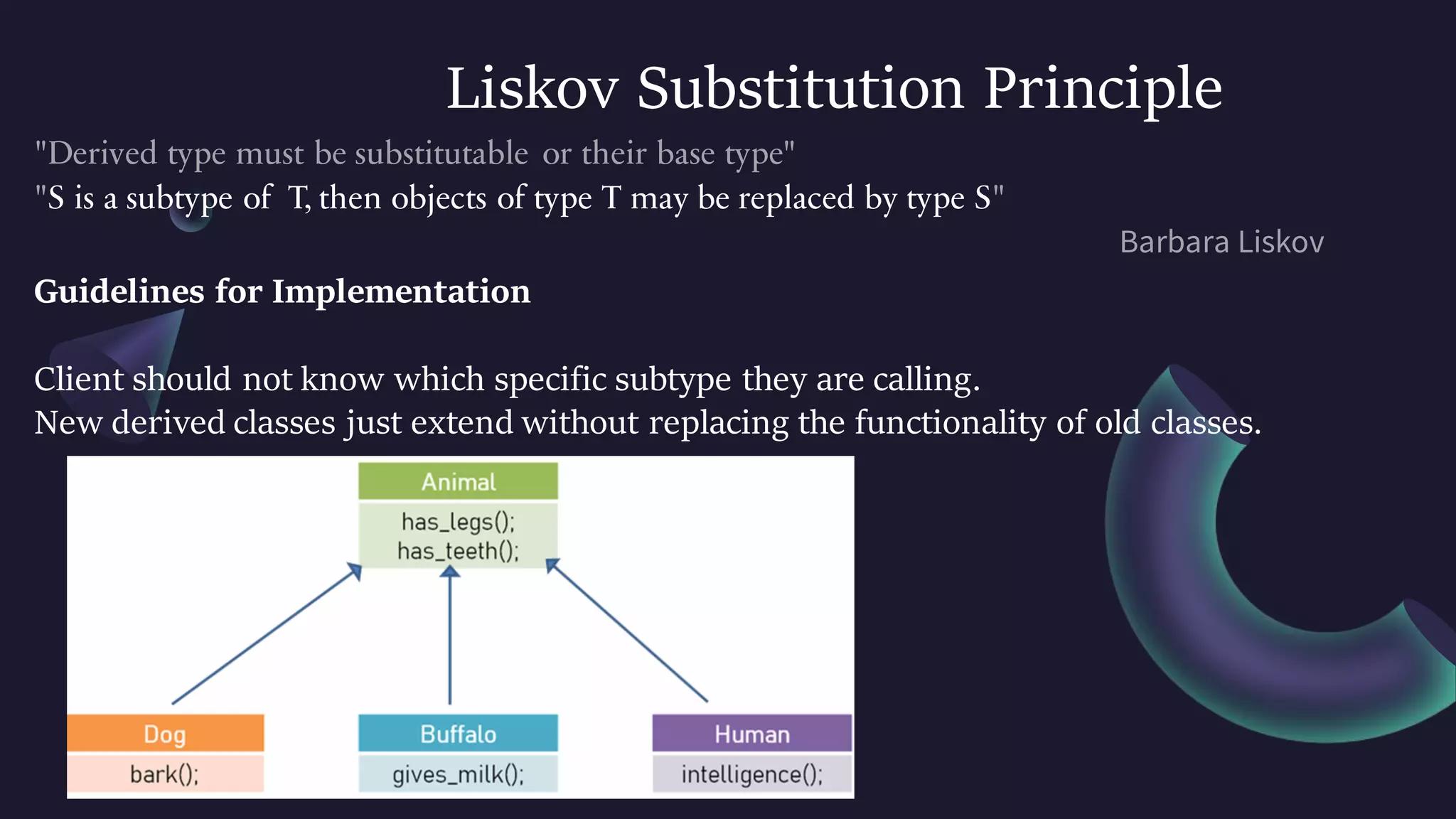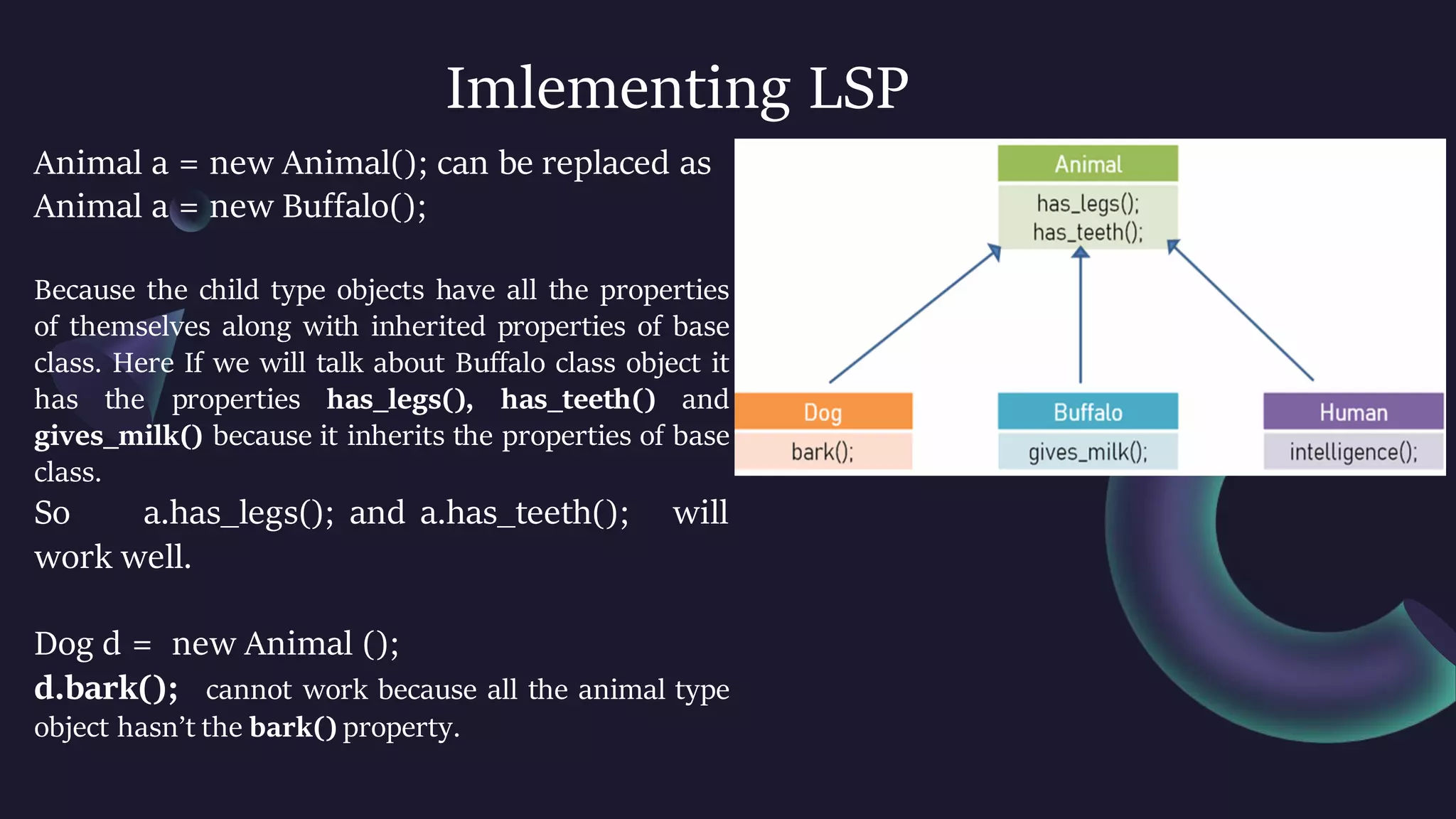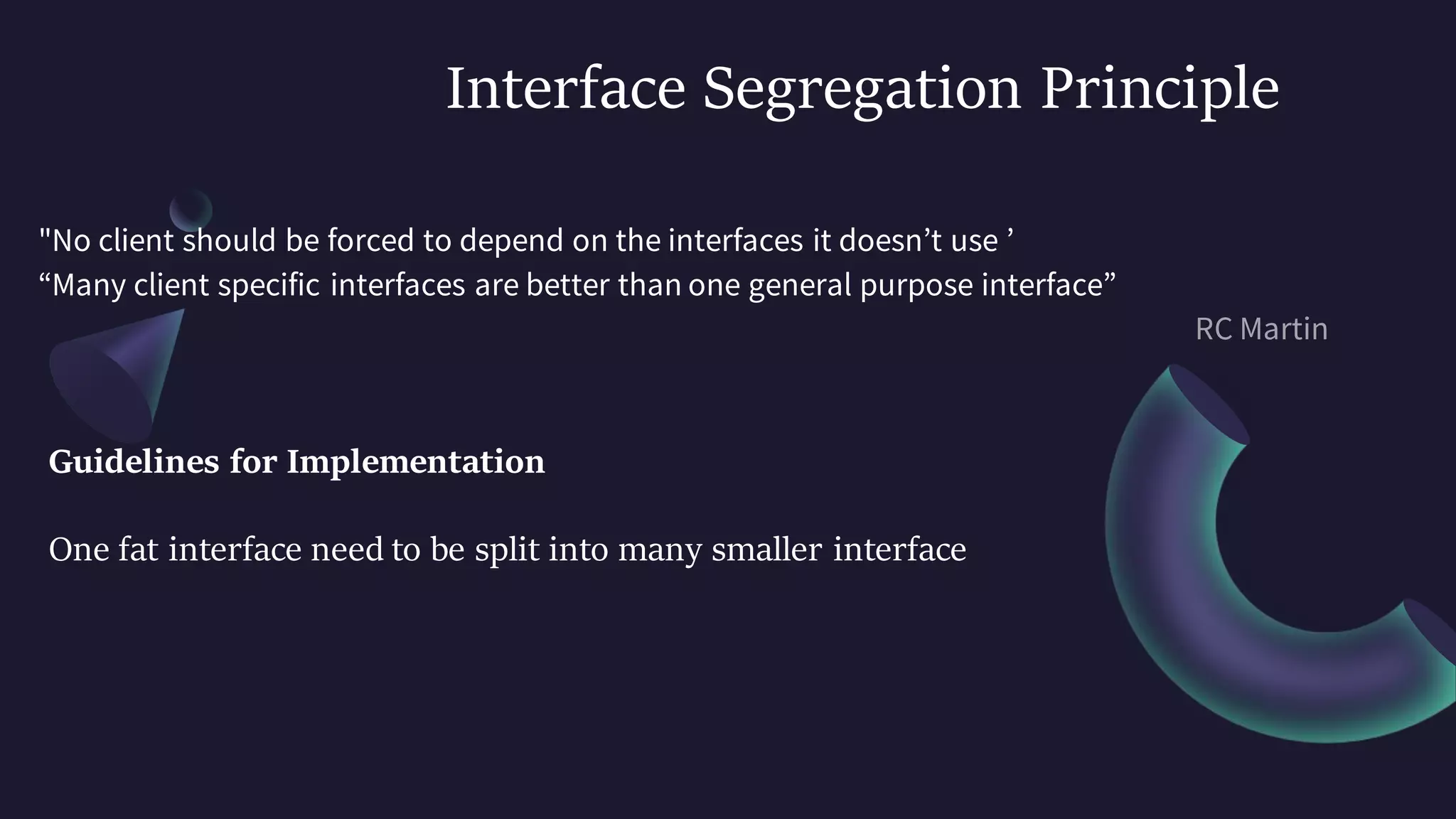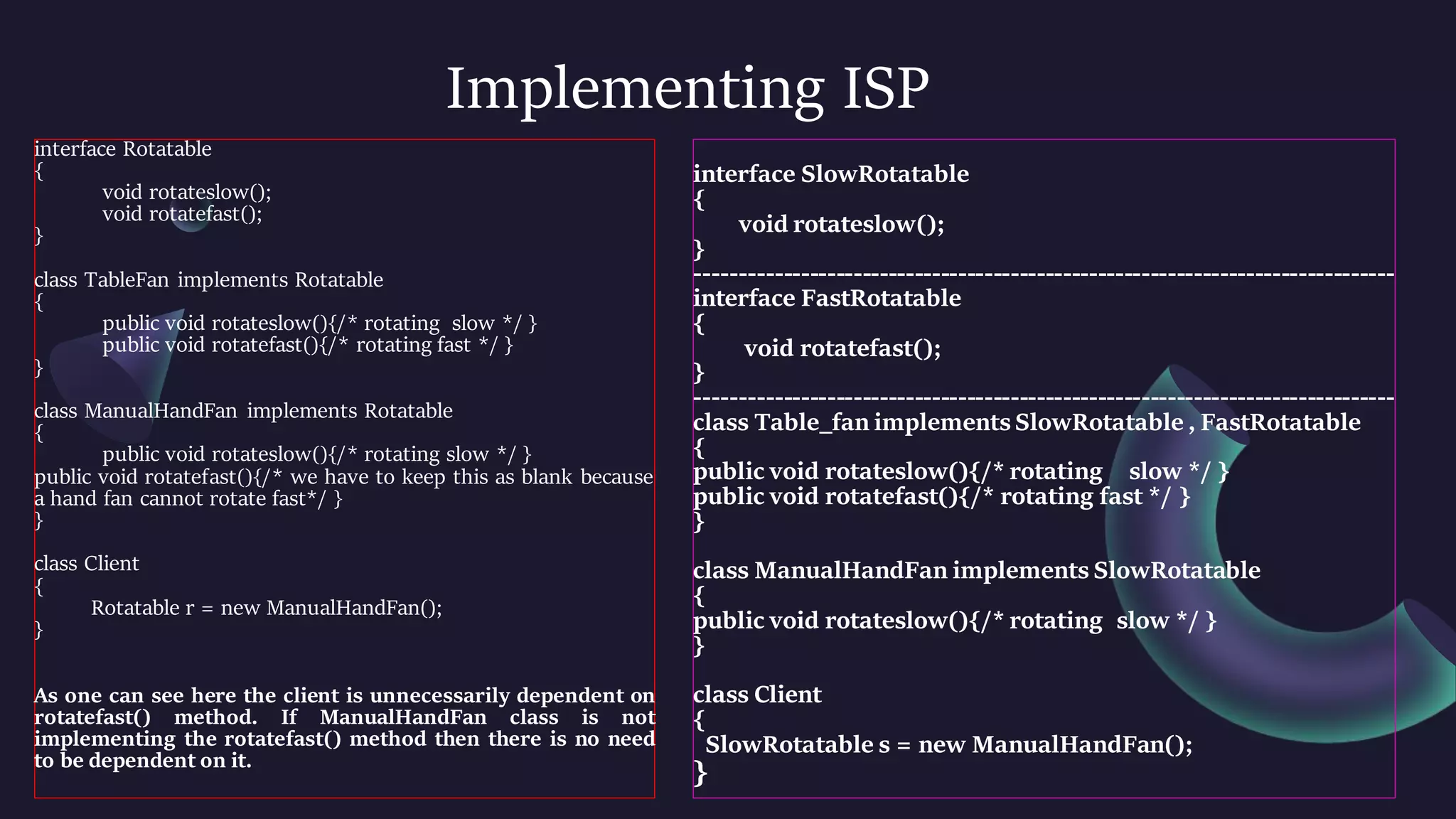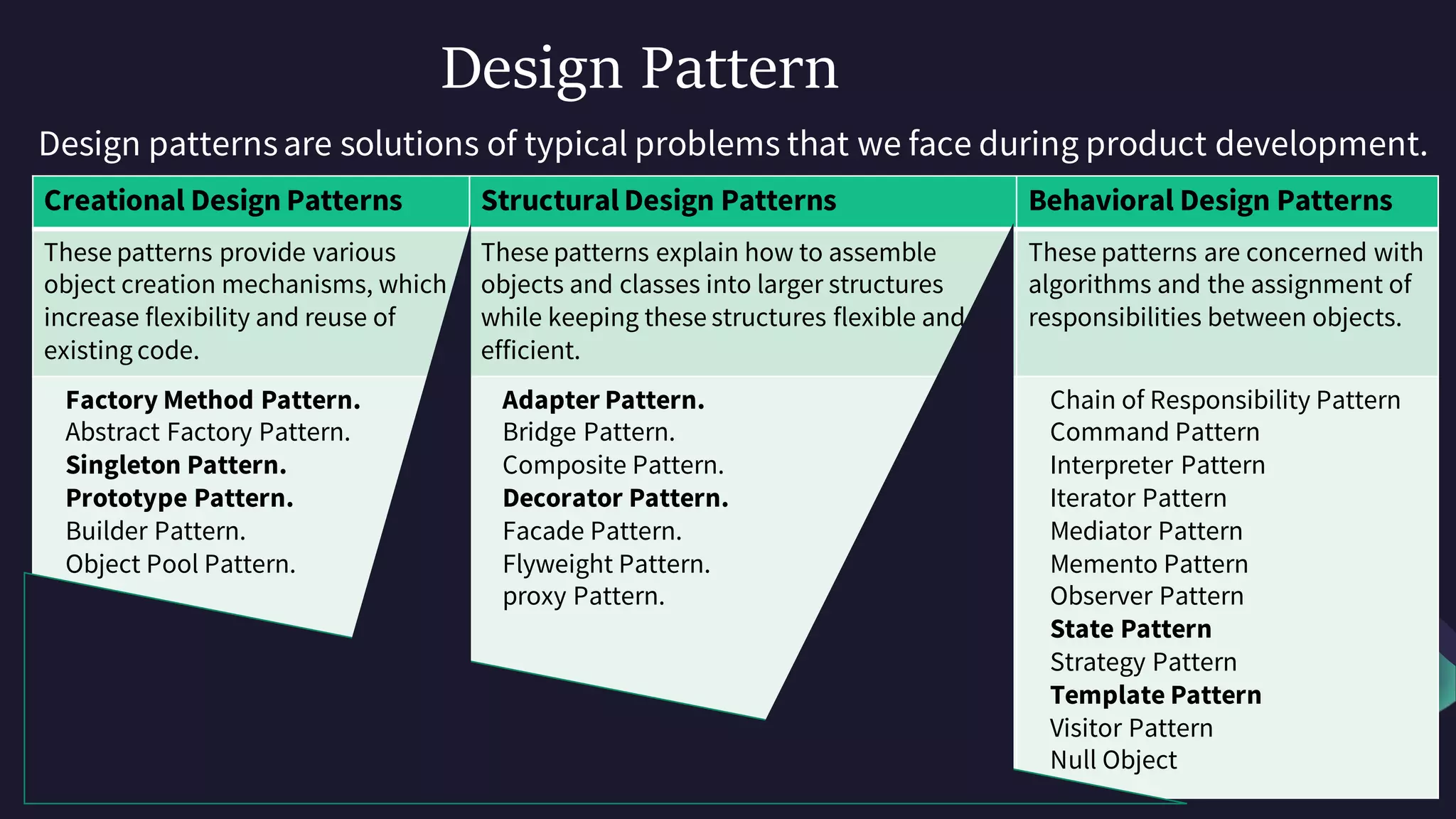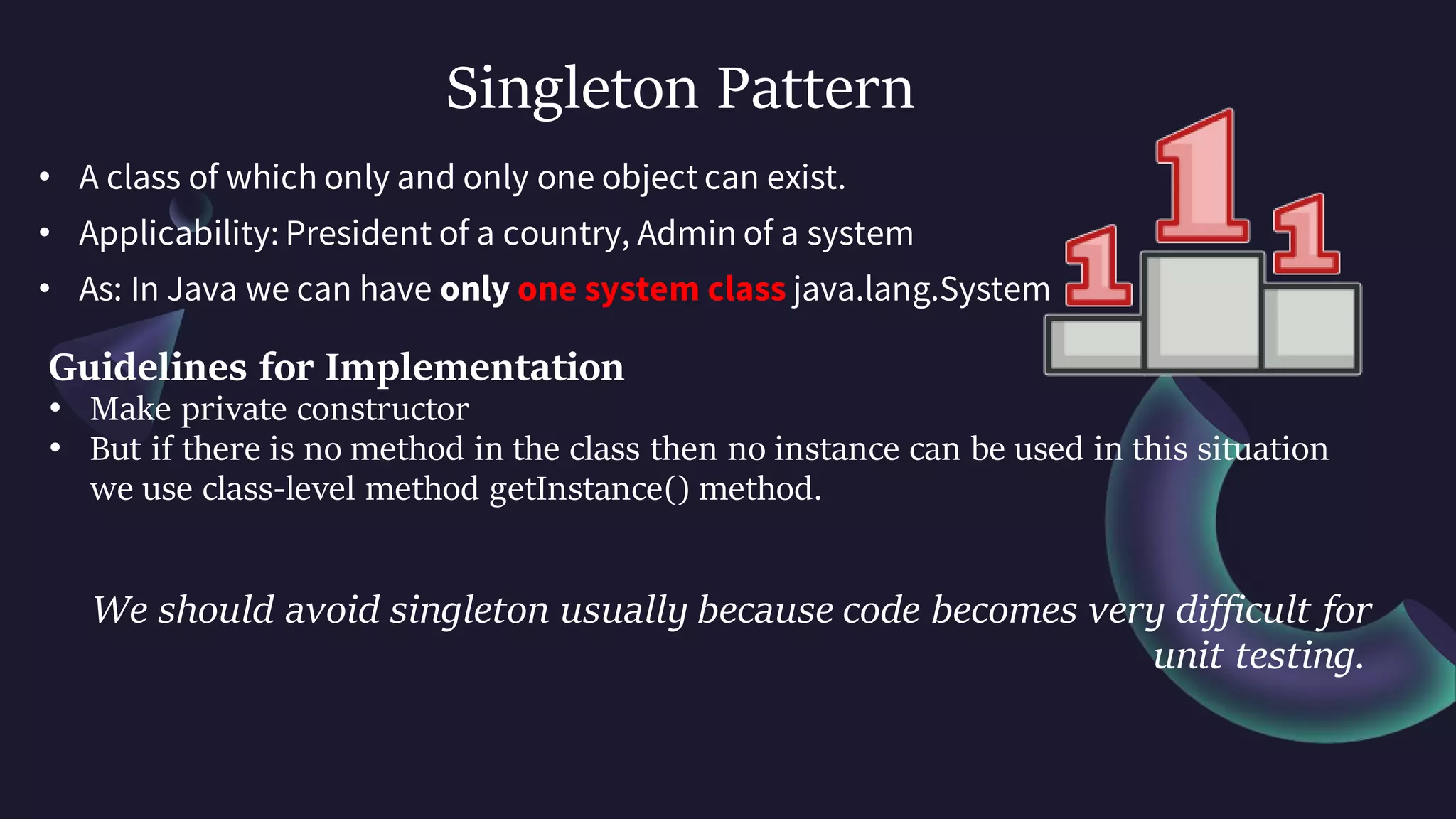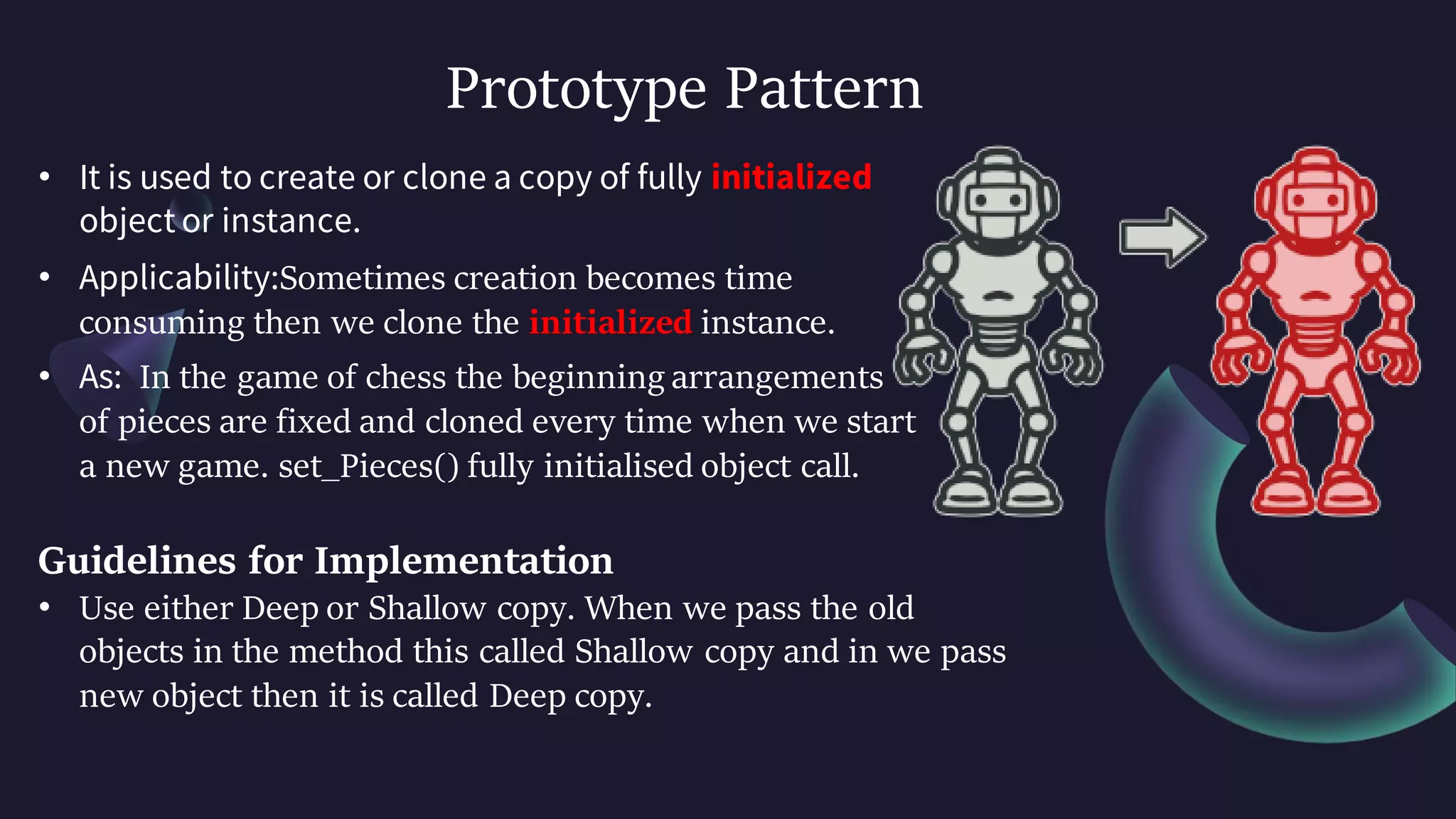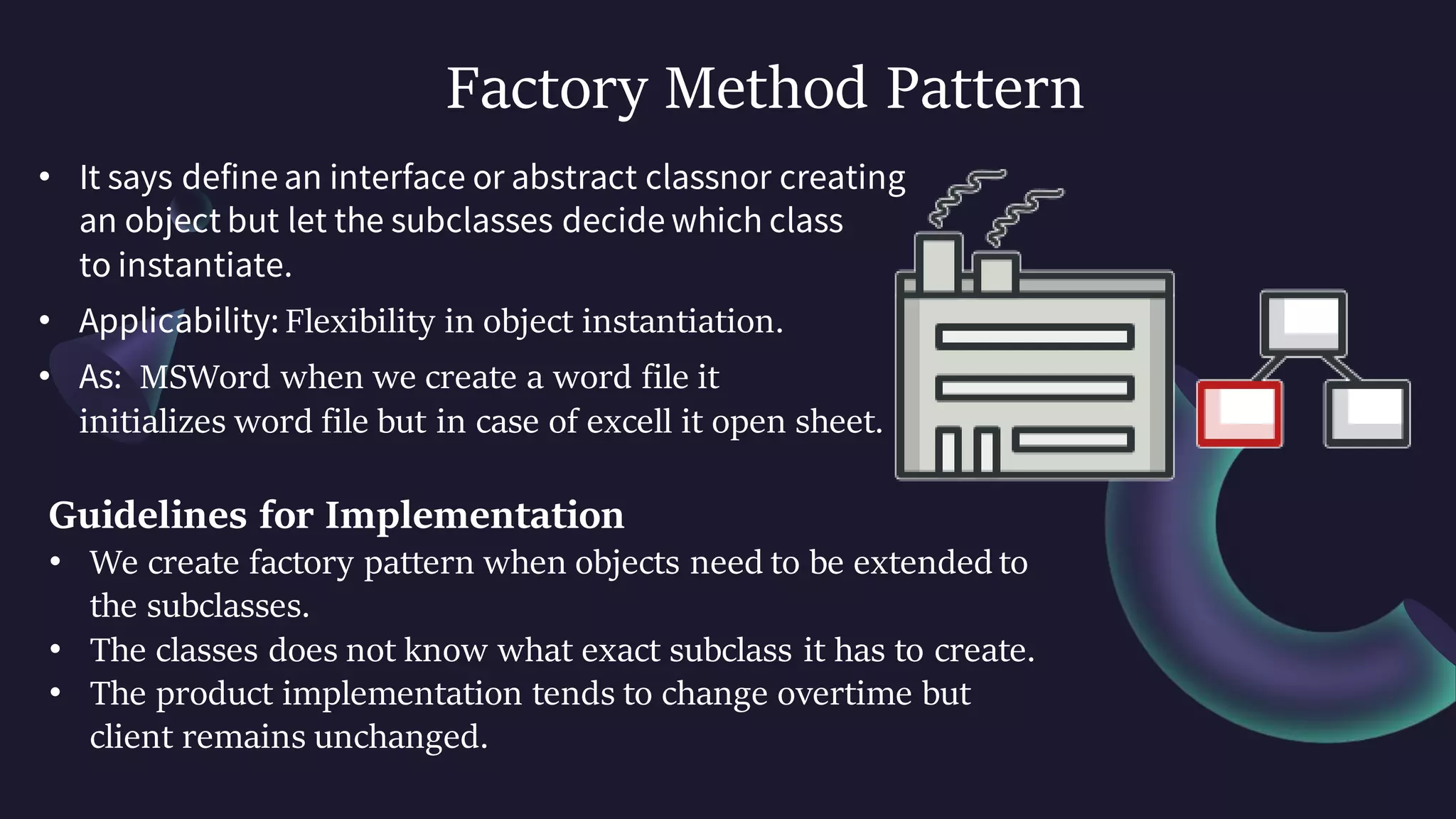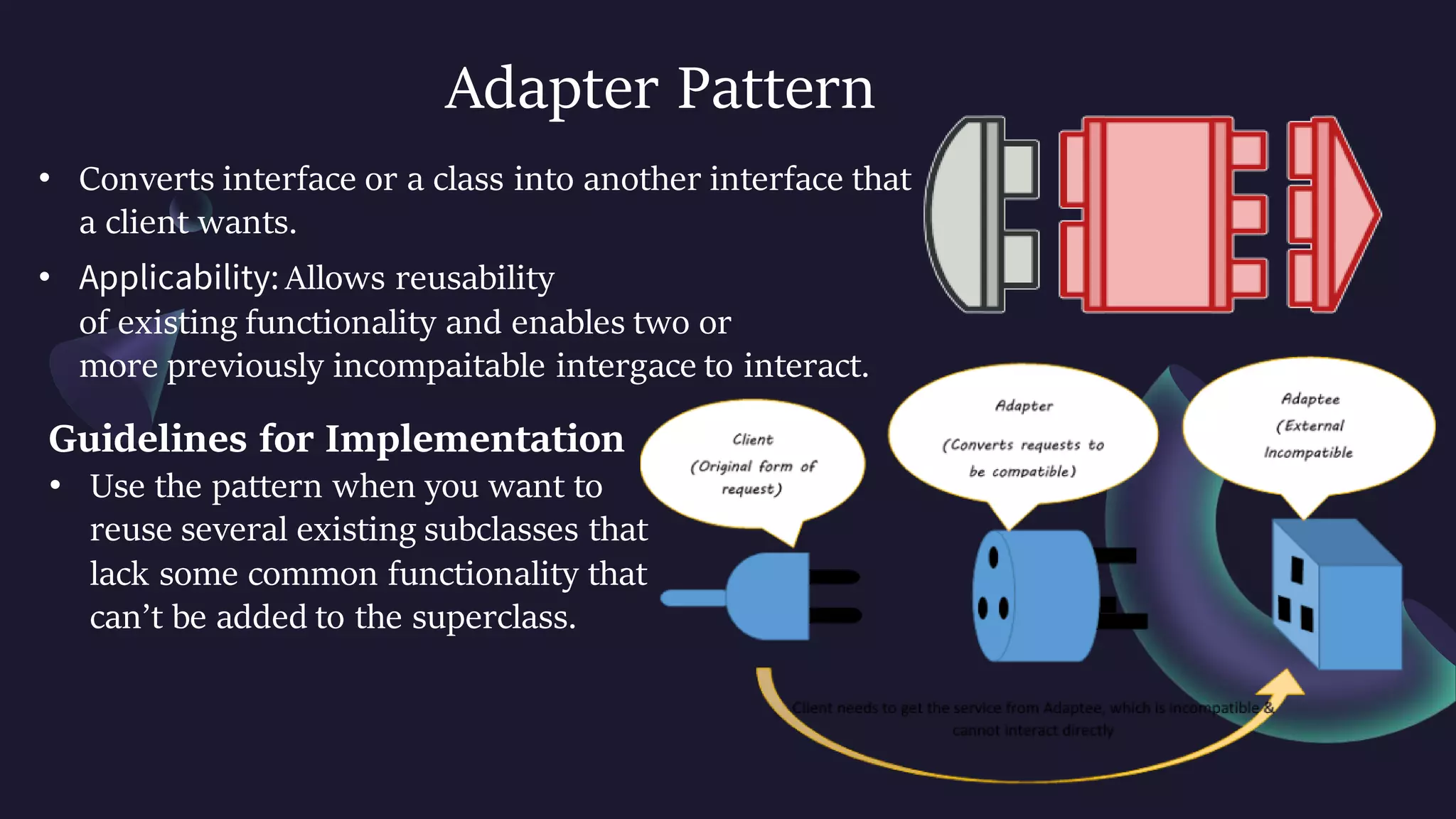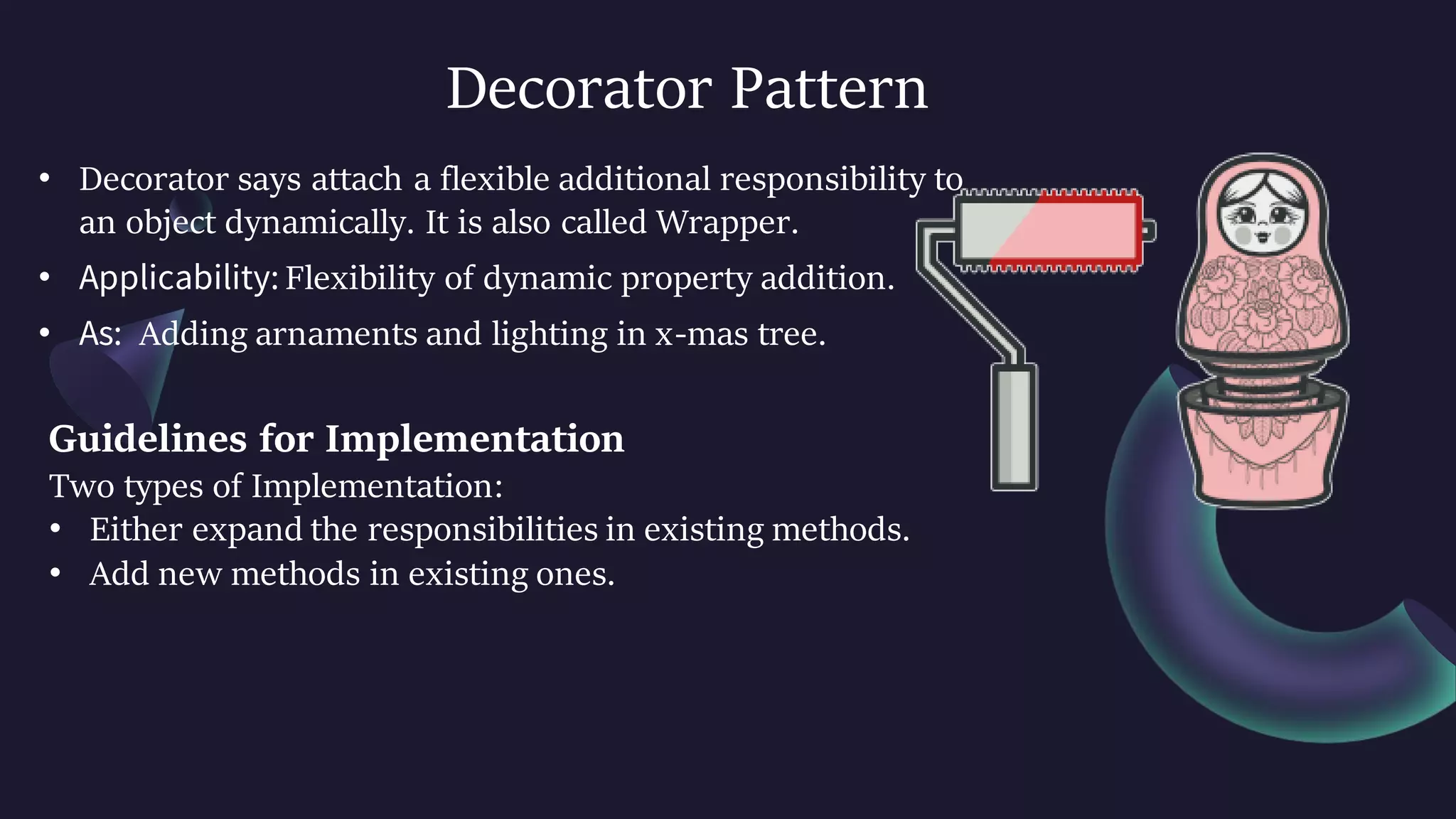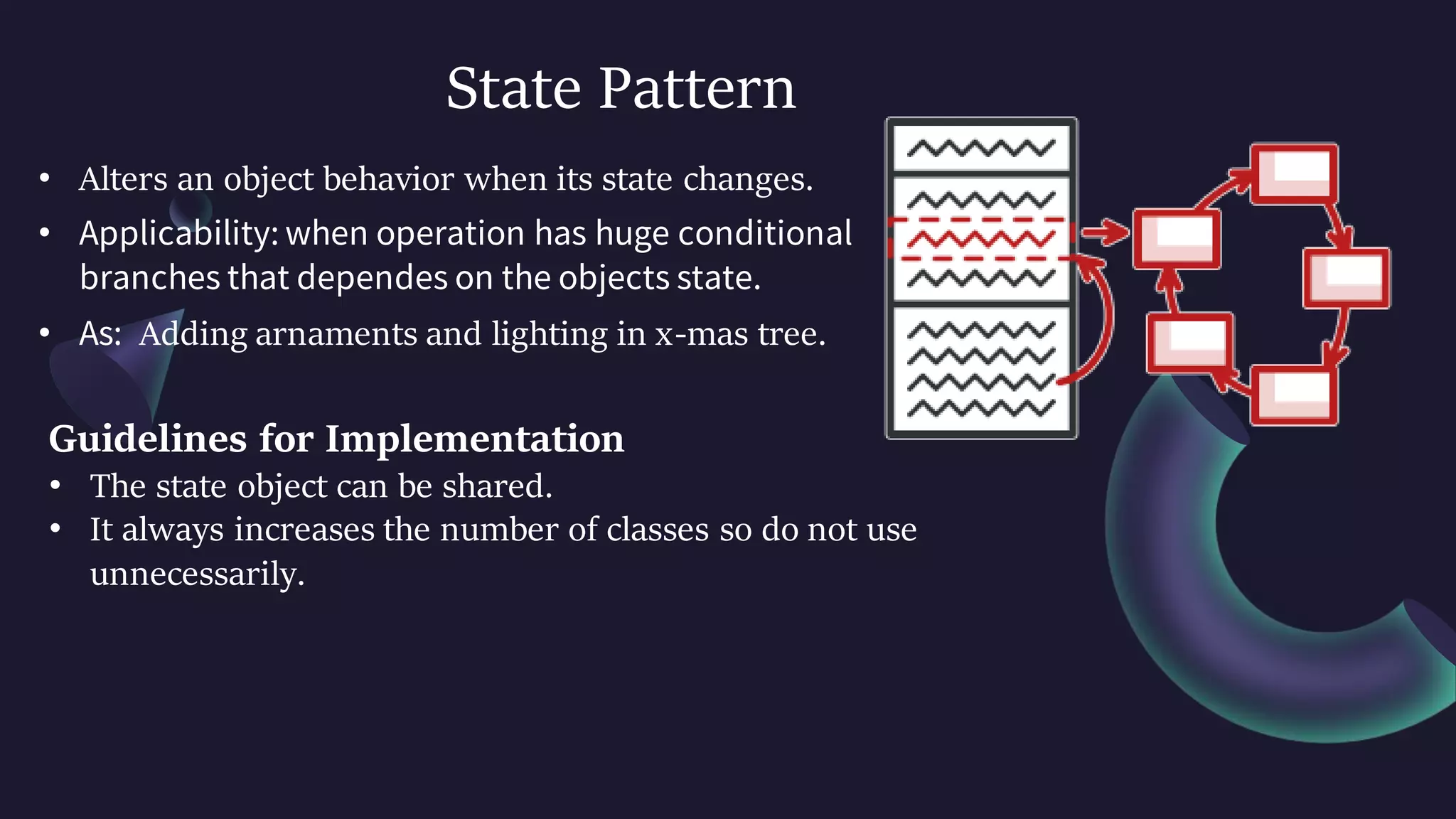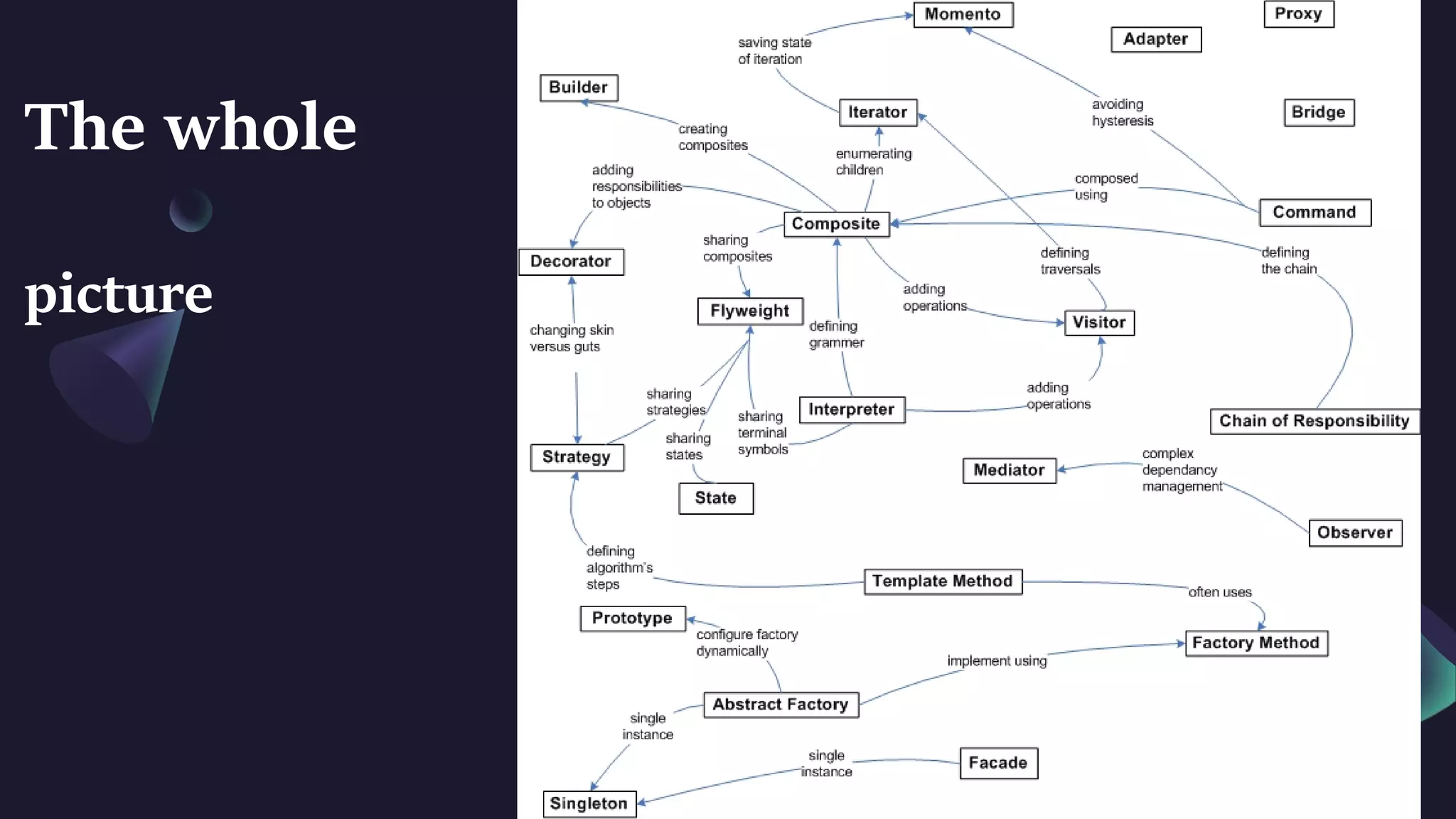The document discusses the software crises, highlighting the importance of SOLID principles and various design patterns in software development. It explains SOLID principles aimed at reducing complexity and enhancing code reliability, alongside different design patterns for object creation and structure assembly. The document serves as a guide for improving programming practices to prevent software failures and improve maintainability.

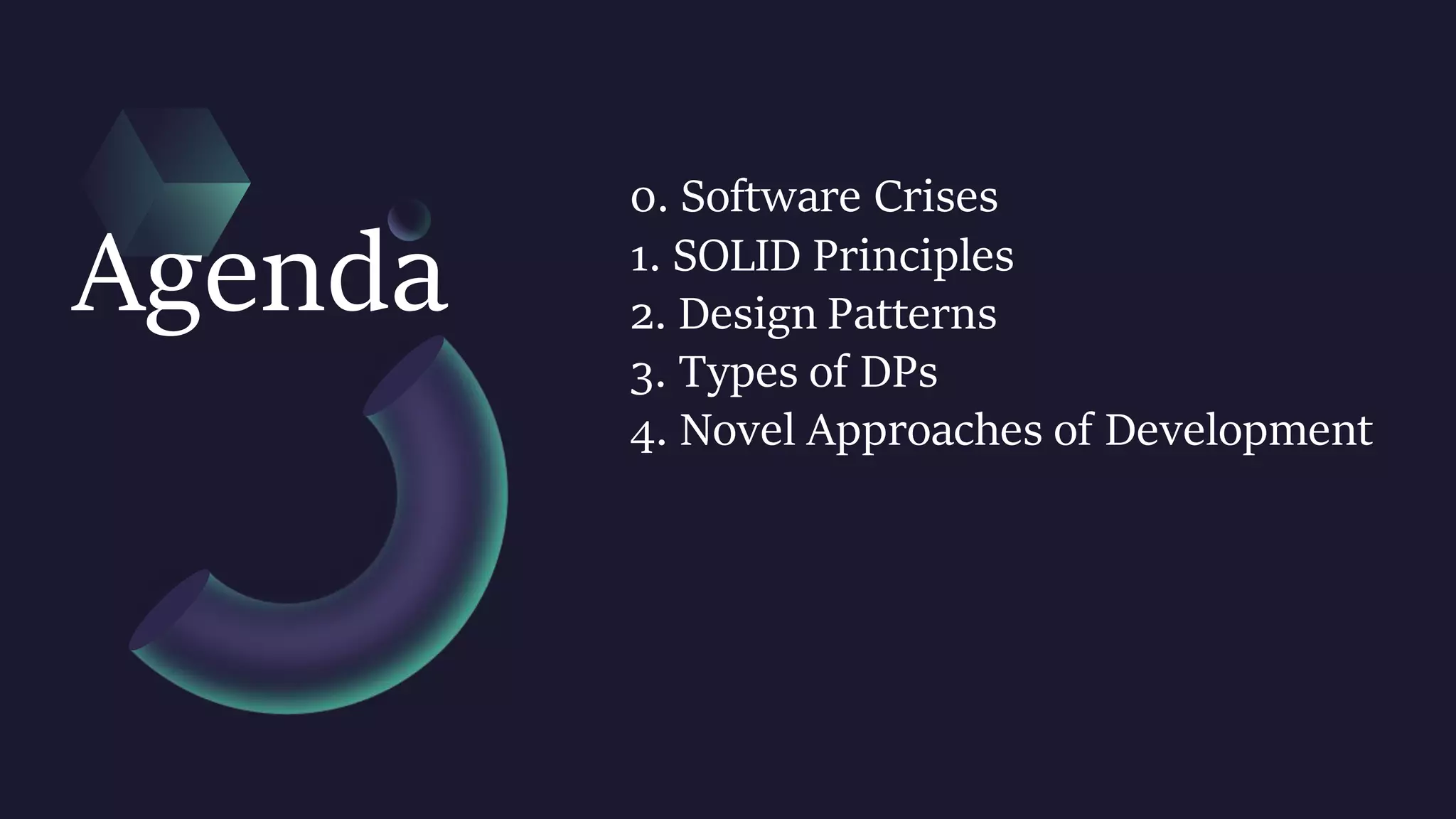

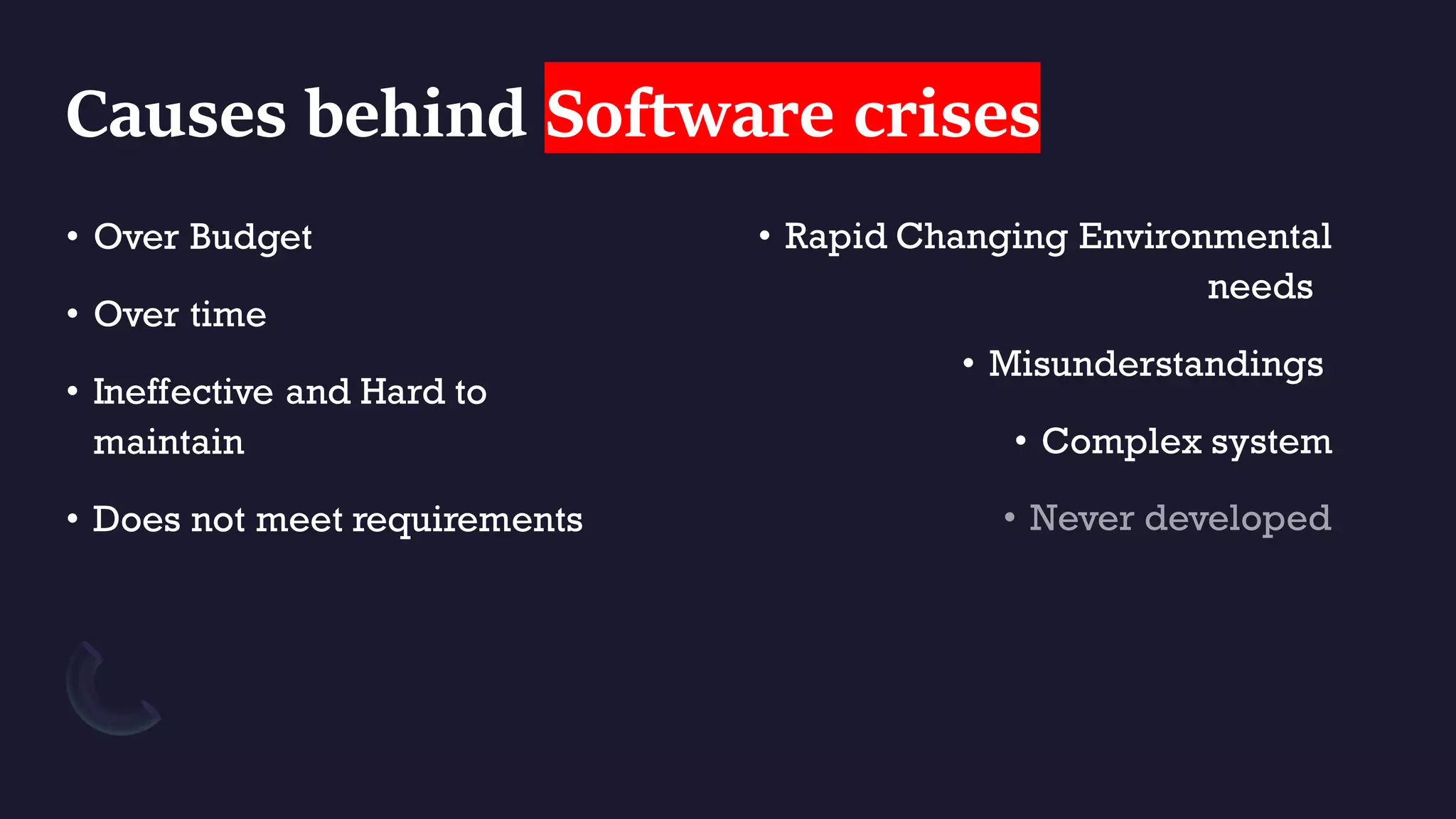
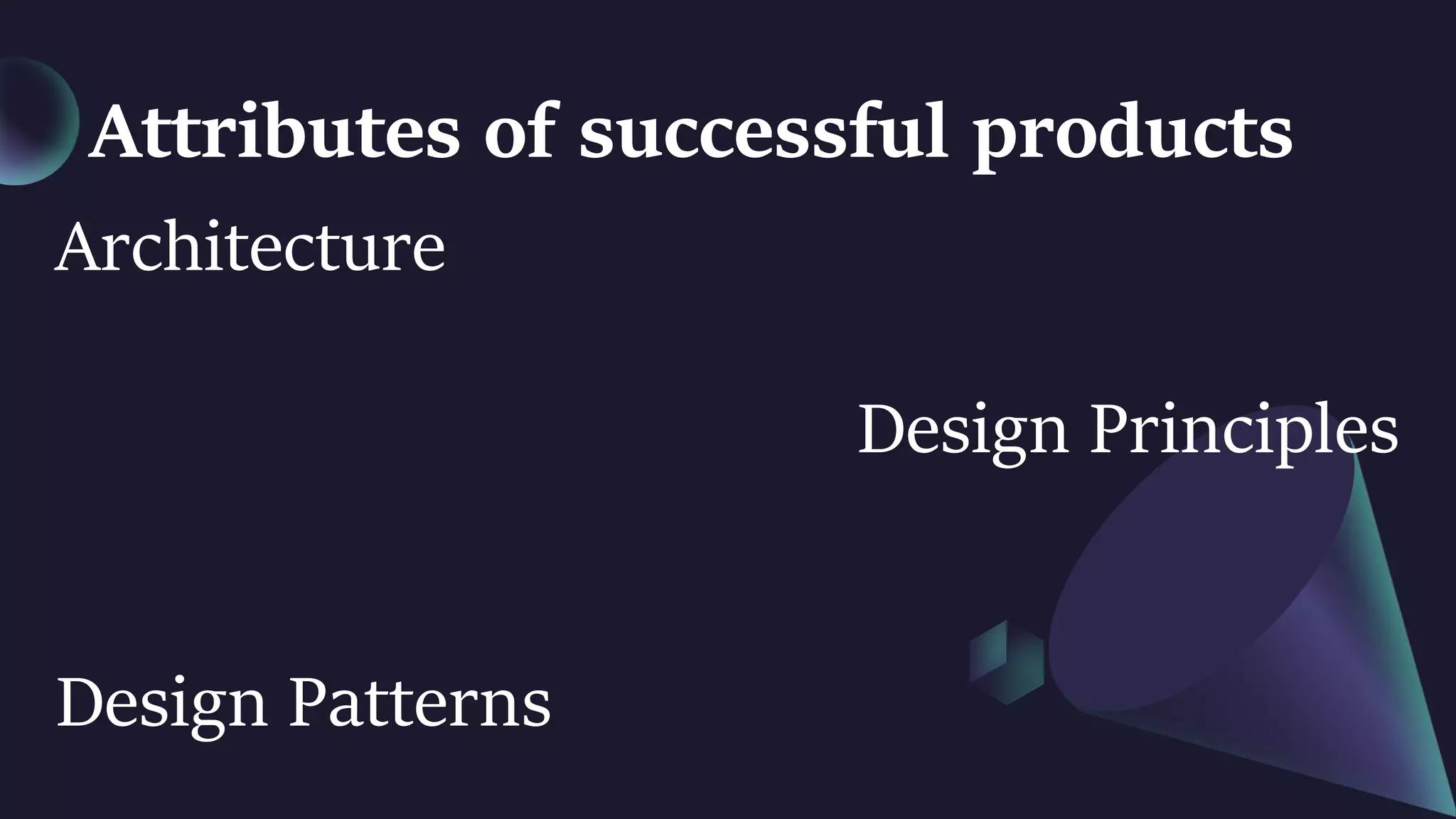

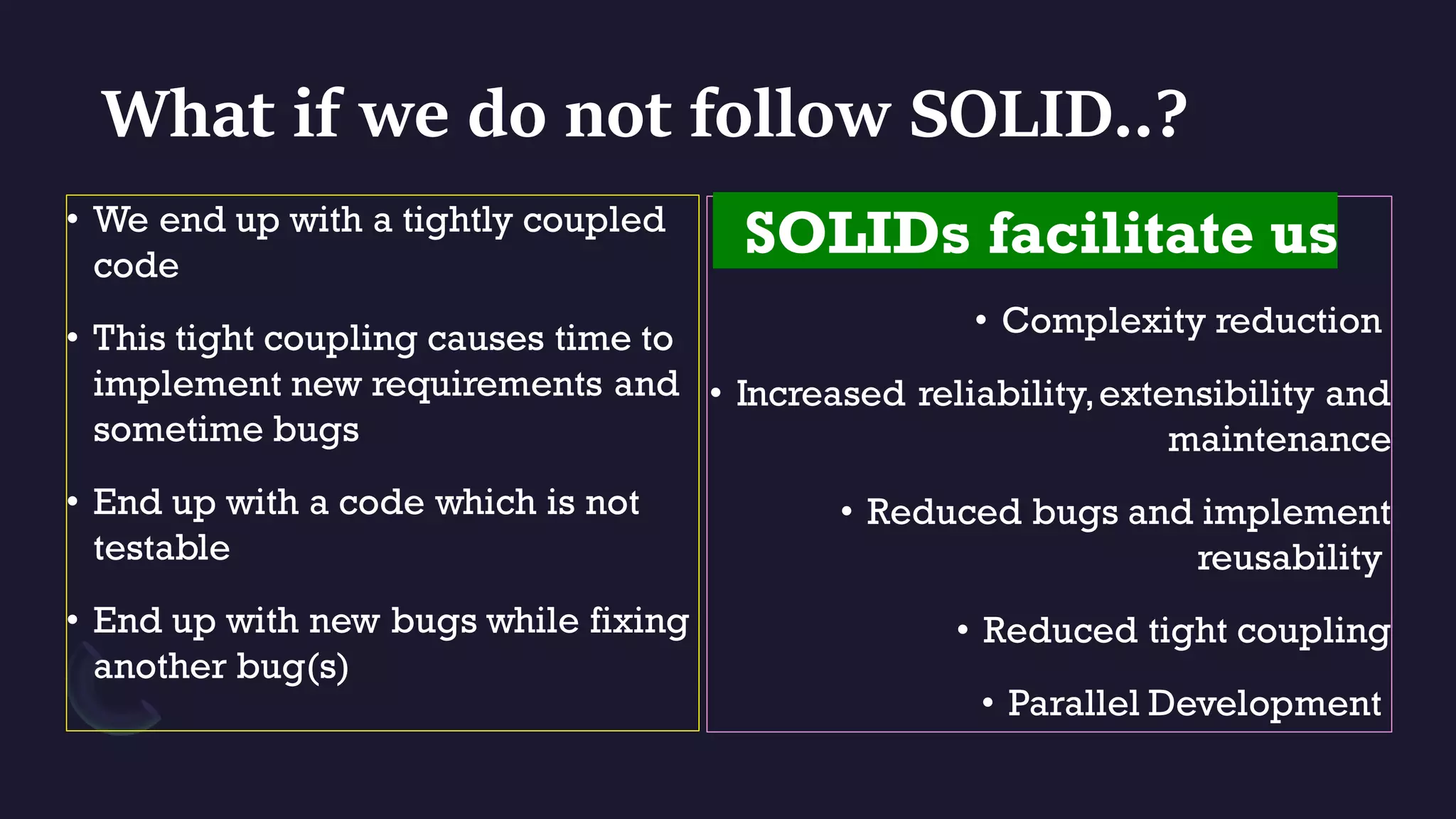
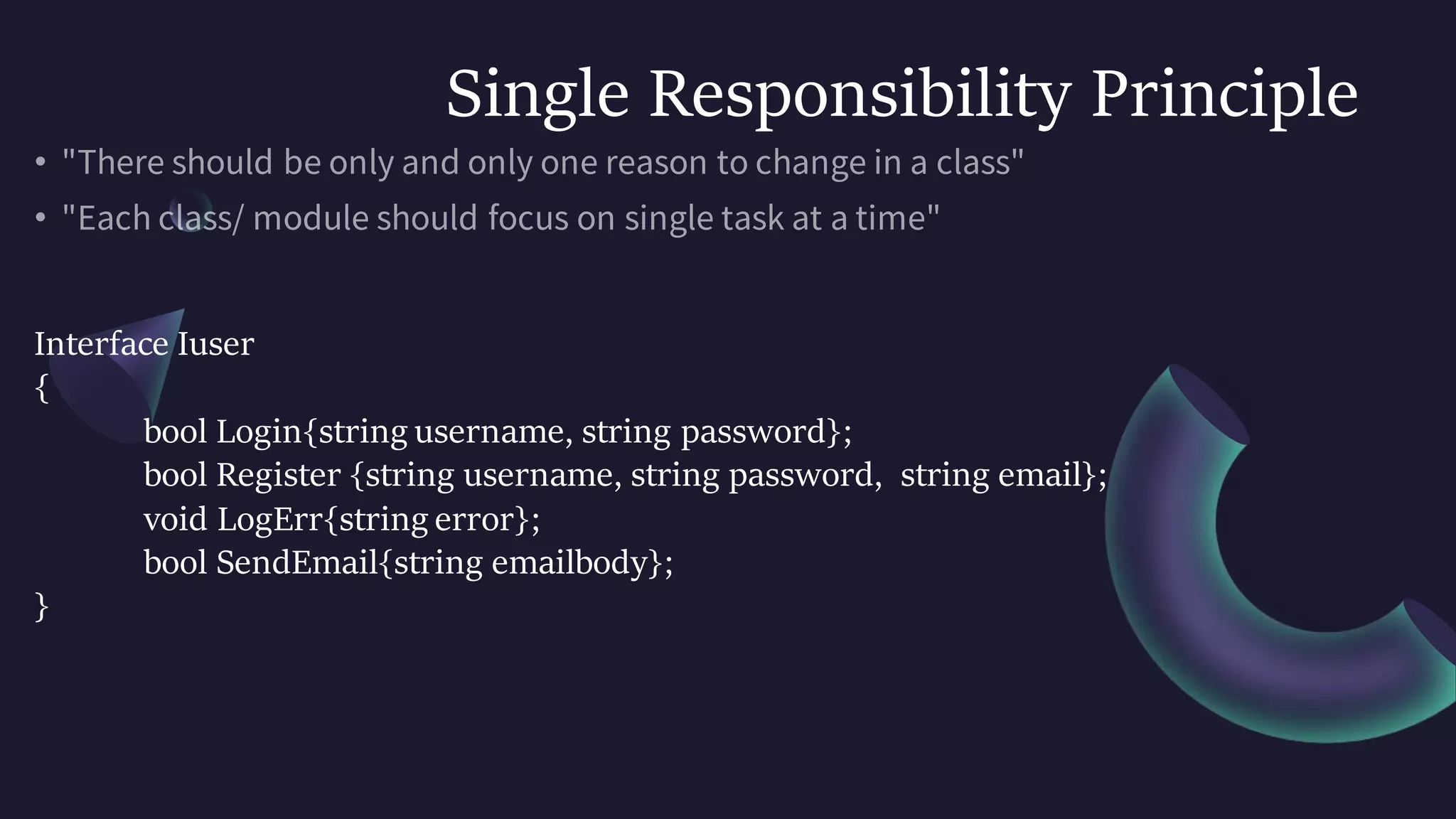
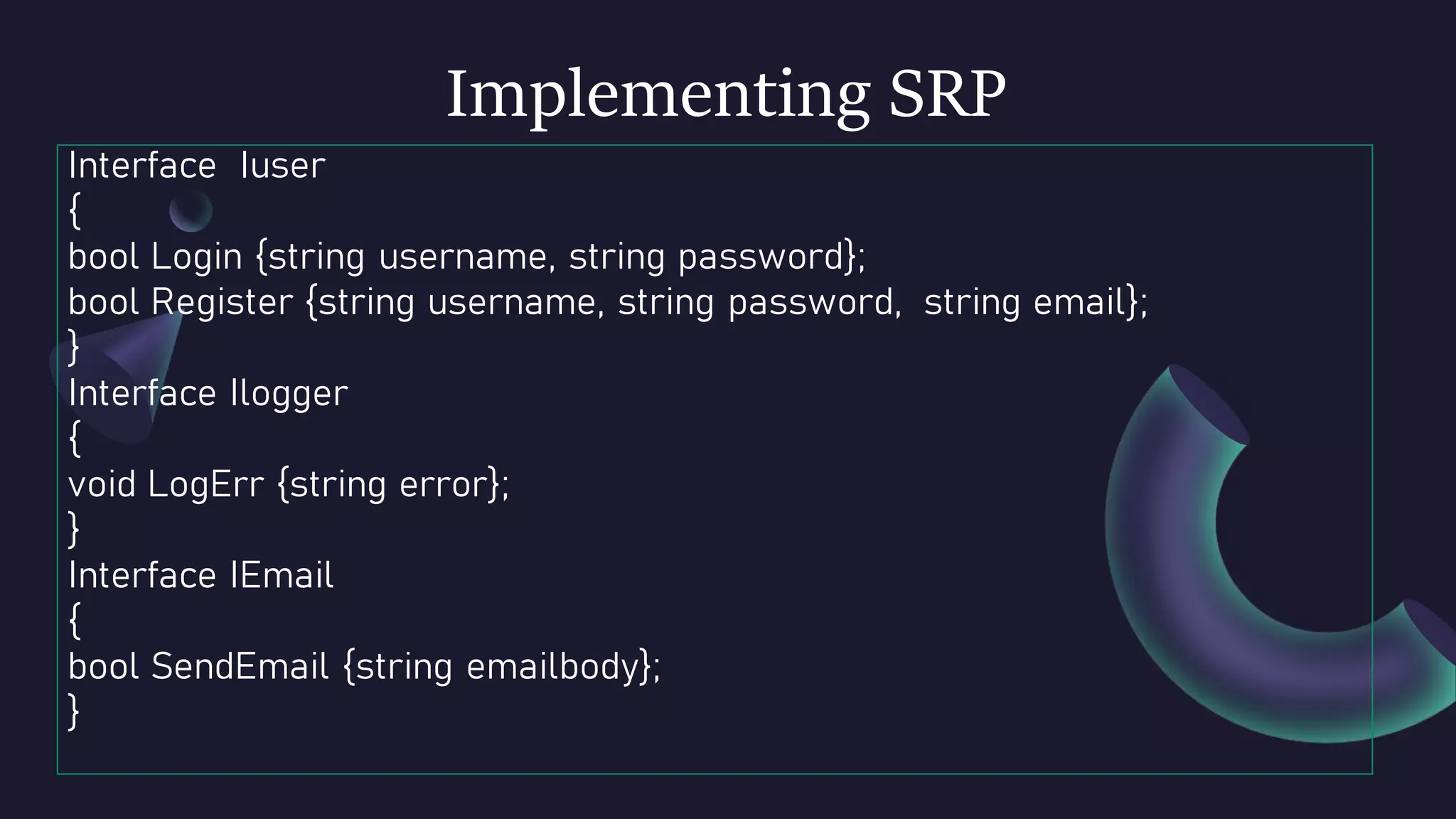
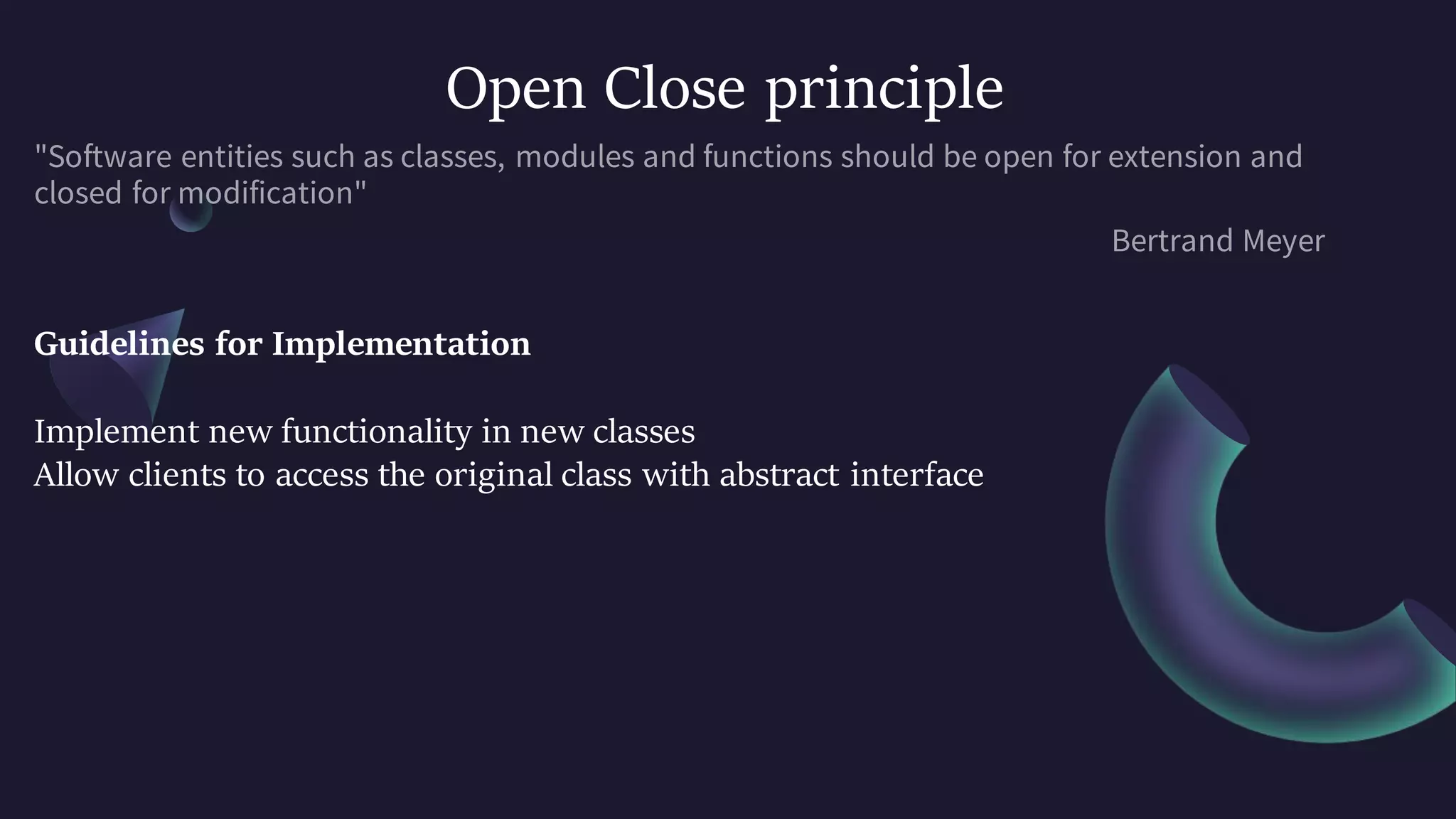
![Open Close principle
public double Area (object[] shapes)
{
double area = 0;
foreach (var shape in shapes)
if (shape is Rectangle)
{
Rectangle rectangle = (Rectangle) shape;
area = area + rectangle.Breadth * rectangle.Length;
}
else
{ Circle circle = (Circle) shape;
area = area + circle.Radius * circle.Radius * PI;
}
return area;
}](https://image.slidesharecdn.com/presentation-210305222848/75/The-maze-of-Design-Patterns-SOLID-Principles-11-2048.jpg)
![Implementation of OCP
public abstract class Shape
{
public abstract double Area ();
}
public class Rectangle: Shape
{
public double Breadth {get; set; }
public double Length {get; set; }
public override double Area ()
{ return Breadth*Length;}
}
public class Circle: Shape
{
public double Radius {get; set;}
public override double Area ()
{ return Radius*Radius*PI;}
}
public double Area (Shape[] shapes)
{
double area = 0 ;
foreach (var shape in shapes)
{area = area + shape.Area ();}
return area;
}](https://image.slidesharecdn.com/presentation-210305222848/75/The-maze-of-Design-Patterns-SOLID-Principles-12-2048.jpg)
